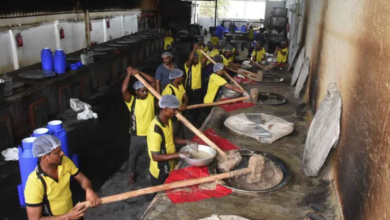Sewage surveillance system to help track monkeypox, dengue in Hyderabad

The unique wastewater surveillance system developed by city-based researchers from Centre for Cellular and Molecular Biology (CCMB) and Indian Institute of Chemical Technology (IICT) to track SARS-CoV-2 is set to become an advanced warning system and a surveillance tool to hunt other infectious diseases including monkeypox and dengue.
and Industrial Research (CSIR) institutions, came into limelight during the Covid pandemic, when researchers used it to accurately estimate the spread of the coronavirus in Hyderabad and elsewhere, without conducting Covid tests on individuals.
Taking the robust wastewater surveillance model to the next level, the researchers have already started (Bengaluru) and about to start (Hyderabad) tracking other infectious diseases like monkeypox, dengue, Acute Microbial Resistance (AMR) in small and medium-sized urban centres in India.
“In Bengaluru, we have already started wastewater surveillance to track infectious diseases like monkey pox, dengue and AMR. The plan is to follow other infectious diseases after SARS-CoV-2. For the next two-years, we are going to standardise or optimise the wastewater surveillance model specific to each city including Hyderabad,” says AcSIR Distinguished Emeritus Professor, CCMB and Director, Tata Institute of Genetics and Society (TIGS), Bengaluru, Dr Rakesh Kumar Mishra.
The wastewater surveillance programme is being taken up by multiple genetic laboratories located across the country and is supported by Rockefeller Foundation. “The sewage surveillance to track infectious diseases will be implemented at least in 7 to 8 big, small and medium-sized Indian metros including Hyderabad. The idea is to give a direction to the local public health system in case of an outbreak,” Dr Mishra said.
In urban centres of India, due to busy lifestyles and work pressure, there will be numerous instances where individuals, even if infected by a viral or parasitic pathogen, avoid getting diagnosed. Such behaviour often becomes a challenge for public health institutions to come-up with a strong response to outbreaks.
“Most people in cities do not go to hospitals when they are sick. They simply pop a pill for fever and report to duties. So we do not know the exact picture of how much is the spread of the infection. But in case of sewage systems, whether individuals visit a hospital or not, the pathogens everyday reach the wastewater facilities and this enables researchers to warn in advance,” adds Dr RK Mishra.
Important points:
1. Monitoring sewage systems can be an early warning of pathogens
2. Even if infected individuals do not get tested, their excretions containing pathogens reach the sewage systems next day
3. Hyderabad, Bengaluru, Pune etc will have their own optimised wastewater surveillance models
4. Sewage monitoring will help detect monkeypox, AMR, polio, dengue, viral encephalitis, Nipah, influenza
5. Monitoring, tracking and screening on infectious diseases through this system
6. Trends in monitoring sewage data to be used to assess trends within the community







